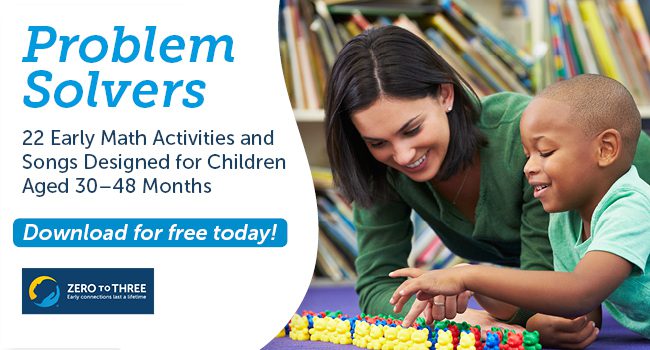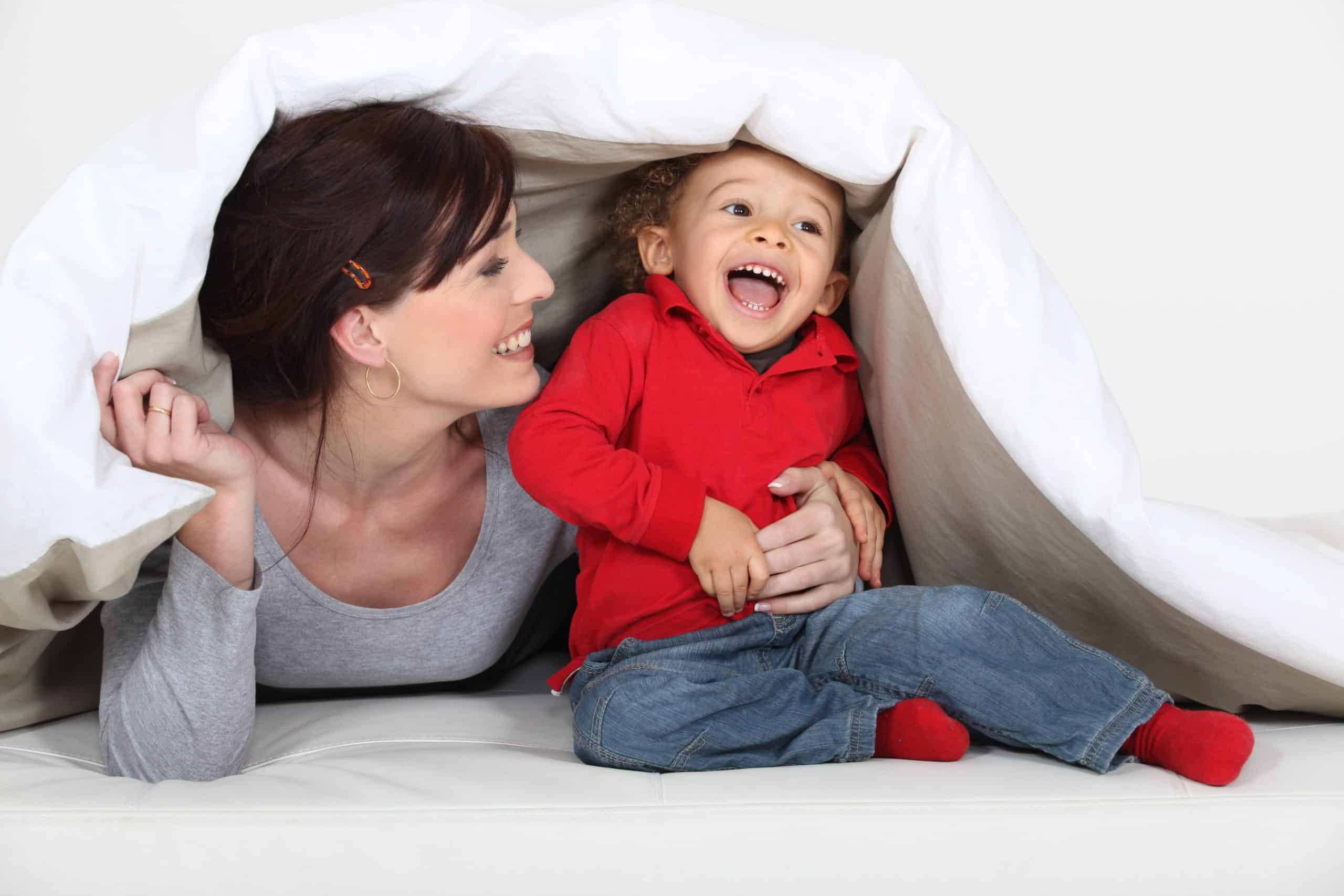Learn how infants and toddlers develop play skills from birth to 3, and what toys and activities are appropriate for their age.
From age 2 to 3, your toddler’s interests and skills are blooming at an amazing, almost dizzying rate! All the new things they can do—from walking and talking to figuring out how things work and beginning to make friends—are fuel for the imagination and creativity. This is a special time in your child’s life. Learn more about how infants and toddlers develop play skills. And don’t forget—YOU are still their most important playmate and toy!
Playing Pretend
Between 2 and 3, your toddler will use their growing thinking skills to play pretend. With props, like a doll and toy bottle, she will act out steps of a familiar routine—feeding, rocking, and putting a doll to sleep. As your toddler learns to use symbols, imaginary play skills will grow more complex. A round pillow, for example, can become a yummy pizza!
TOYS TO EXPLORE:
- Stuffed animals and dolls
- Accessories such as baby blanket, bottle for doll, etc.
- Toy dishes, pots and pans, pretend food
- Toy cars, trucks, bus, or train, with little people that fit inside
- Blocks
HELPING YOUR TODDLER PLAY AND LEARN:
- Let your child choose what to play, and then add on to his activity. If they have a toy bus, you might ask where it’s going or if they would like to pick up some people waiting at the bus stop.
- Give your child a block and say, “Do you want a piece of my birthday cake? It’s so yummy!” (as you pretend to munch on it). Do they understand the block can stand in for something else? If so, have a birthday party using the block as a cake, sing a birthday song, pretend to blow the candles out, and “cut” a slice to eat.
Solving Problems Through Play
Sorting toys—putting cars in one basket and balls in another—is just one way that your toddler is solving problems using thinking skills. You may also see them try one puzzle piece in different spaces, or turn it around to see if it fits. Your child is now also using tools (like a stick) to solve problems (how to reach a toy under the couch).
TOYS TO EXPLORE:
- Chunky puzzles
- Memory-type games
- Stacking cups or ring stacks
- Shape-sorters and bead mazes
- Toys that can be activated—like cars that roll forward when you pull them back
HELPING YOUR TODDLER PLAY AND LEARN:
- Make your own Memory game using photos of family members. Print out two copies of 10 photos, glue each photo to an index card. Place them face up on the floor and see if your child can find the matches.
- Turn cleaning up into a sorting game. Take photos of your child’s different toys and tape them to the basket or box where they belong. Show your child how to sort her toys. Before you know it, they’ll be an expert at the “clean-up game”!
Now You’re Talking!
Toddlers are learning new words by the day! Most are using two-word phrases (“what that”) and by age 3, some three-word phrases (“Josie want cookie!”). Toddlers can now follow two-step requests such as “Please get your hat and put it on.” Two-year-olds can also understand stories. They can now connect the words you say with the illustrations.
TOYS TO EXPLORE:
- Board books
- Songs and fingerplays
- Dolls
- Child-safe mirror
HELPING YOUR TODDLER PLAY AND LEARN:
- During bath-time, ask your child to wash his nose and belly. Then ask them to wash his doll’s nose and belly. Look in a mirror together and name the different parts of your faces—eyes, nose, mouth, ears, and more.
- Read together. If your toddler is wiggly, ask them to do the actions on the page—hopping like the frog or dancing like the little mouse. Ask questions, too: “What do you see on this page?” or “Do you see a moon?”
Fantastic Fingers
Your toddler is now able to use his hands and fingers to pick up food, small toys, and more. They may even hold a crayon using his thumb and pointer finger, instead of their fist. Toddlers are learning to control the strokes they make with crayons and markers.
TOYS TO EXPLORE:
- Foam or wooden blocks, plastic interlocking blocks, or bristle blocks
- Chunky puzzles
- Pull-toys, stringing beads, and pop-beads
- Washable crayons and markers
HELPING YOUR TODDLER PLAY AND LEARN:
- Tape paper to your child’s high chair or to the table and let your child explore with crayons and markers. Watch them scribble away! See if they want to imitate making a line or circles that you draw first. But don’t worry if they have their ideas about what she wants to draw—or how to draw it.
- Play with play-dough. Practice rolling the dough, poking holes in it, or making little balls of dough and dropping them in a small cup to dump out. Older toddlers still like fill-and-dump activities—plus this lets them use their hands and fingers to explore and create.


